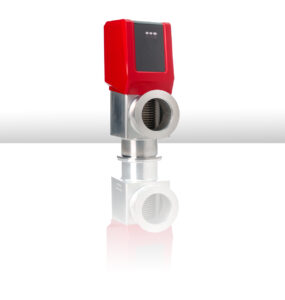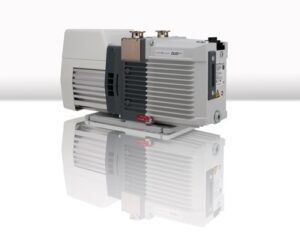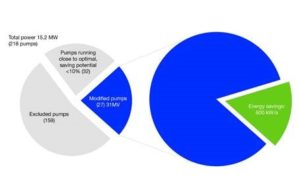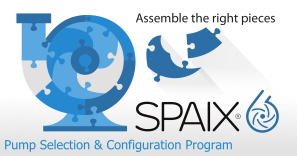Highly Efficient Pump Technology Takes the Stage
The Cuvilliés Theatre in Munich is one of the city s most venerable venues and is considered one of Europe s most beautiful rococo theatres. It was built as a residence theatre from 1751 to 1753 according to the plans of the Elector’s court architect François Cuvilliés.
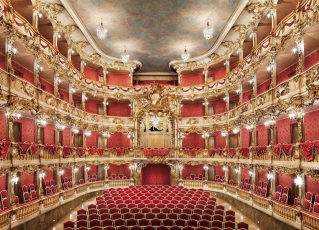
The Cuvilliés Theatre in Munich (Picture: Bayerische Schlösserverwaltung, Mannsmann.)
The theatre experienced ups and downs in the following centuries. In 1781, Mozart himself conducted here the world premiere of his opera Idomeneo. In 1818, the theatre had to close down for financial reasons. However, it re-opened in 1857. In March 1944 the theatre was destroyed during a bombing. But before, the precious historical interior could be removed and stored safely.
In 1958 the theatre was re-built in a war-torn wing of the adjacent residence castle. Since then it is named after its constructor Cuvilliés. Due to an extensive need for renovation the last curtain fell again in 2004. However, only for the obsolete stage technology and building services equipment which did not correspond with the requirements of the theatre s operation anymore. An improved energy balance was in the focus of the renovation. The pump technology of the Dortmund pump expert decisively contributes to this. After a renovation period of four years, the theatre re-opened in June 2008 in its old glamour, but with state-of-the-art technology.
Considering the desired energy efficiency but also the increase in comfort for visitors, the engineering office Ottitsch from Munich developed an economical and energy-saving overall concept for heating, ventilation and air-conditioning. So the building is heated and hot water is generated by means of district heating. Heat supply of the different parts of the building is mainly ensured by energy-efficient fan coils and radiant floor heating systems. In addition, the heat circuits of the floor heating for the foyers are connected with the cold circuits so that they can be used as floor cooling systems during the summer months. In the event of a colder outdoor temperature, a free cooling utilises the ambient air for cold generation. All technical equipment in the building is linked to a building automation system which also allows for a demand-oriented and thus economical operation due to central control and monitoring of the individual systems and system components.
The most important component in the energy-efficient operation of the theatre is the pump technology applied in building services. Almost all heat and cold circuits are operated with high-efficiency pumps from the "Wilo-Stratos" and "Wilo-Stratos ECO" series. These are electronically controlled glandless pumps with maintenance-free frequency converters and permanent magnet rotors. They are based on so-called electronically commutated motors (ECM) and double the efficiency compared to electronically controlled pumps with conventional drives. ECM technology is the latest variant of the DC motor which is characterised by particularly high energy efficiency. Due to the automatic adjustment of the pump s output to the alternating operating states, the saving potential compared to uncontrolled standard pumps is above 80 percent. Thanks to the pump technology, operating costs in the Cuvilliés Theatre are considerably lower than when using uncontrolled pumps.
The co-operation of pump technology with building automation is also ready for the stage. The pumps in the Cuvilliés Theatre are equipped with IF-Modules. These modules are adjusted to the requirements of the respective building management system and are simply plugged into the pump s interface. The remote setpoint adjustment of the pumps is realised via a 0-10V interface. Thus the connected pumps contribute to a controlled operation of the theatre which is always adjusted to the respective requirements.
Moreover the bus technology facilitates the fault diagnosis and the co-ordination of repair orders. Thus, for example, the pumps can transfer all electrical, mechanical, thermal and hydraulic pump data like pressure, flow quantity, power consumption and the number of operating hours but also the different fault states via data protocols to the control room. In the event of a fault or a breakdown of a pump, immediate reaction is possible.
Especially in public properties the energy-optimised renovation is an economical opportunity to relieve the budgets of the states (Länder) and the municipalities on the long term and, at the same time, become a role model in public. The energy-efficient building services of the Cuvilliés Theatre help to considerably reduce the operating costs. In conjunction with state-of-the-art bus technology the energy-saving pump technology can be monitored and controlled according to the needs at any time. So a reliable and quasi energy-saving operation of the system technology is guaranteed. Behind the curtain it is especially the low power consumption of the Wilo high-efficiency pumps which causes special applause.
Source: WILO SE


